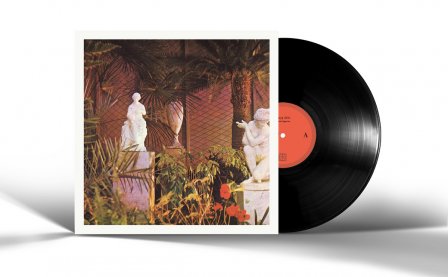The meeting of YOUR FAVORITE ALIENS Spencer Clark (ov The Skaters, amongst others) and Jan Anderzén (ov Kemialliset Ystävät, amongst others) has brought forth Alien Wildlife Estate, a Soundvision that (roughly) approximates that bastion of global hubs: the International Airport. There’s a forced universality about the airport experience, the shared experience of architecture and commerce binding disparate cultures and creeds together. Sure, an ever-present tension lingers over the security checks and endless shopfronts, but isn’t that to be expected in this transitionary state? Uncertainty defines the airport, like a corporate limbo for all travelers and jet-setters, a microcosm of in-betweens and halfways.
In this light, the duo’s recorded efforts similarly exist in a space of multitudinous elements, simultaneously mingling in an alien waiting lounge. And it’s departing from Tarzana via Pacific City, straight into thee feverish busts of underground fiends worldwide.
“The For-Itself is suddenly compromised. I open my hands, I want to let go of the slimy, and it sticks to me, it draws me, it sucks at me… Slime is the revenge of the In-Itself.”
– Jean-Paul Sartre, Being and Nothingness
‘Tis the Season of Slime, y’all, and the residual ooze is inescapable.
We are all vessels for slime, our bodies born out of it. Slime is affirmative in its sensory way, a reminder of what it means to be alive, to feel. Slime, too, is violent and unnatural. Consider the horreur of Sartre’s slime, as well as the English Standard translation of the Prayer for Vengeance: “Let them be like the snail that dissolves into slime.” Tangible, yet foreign, the reality is contained somewhere within that viscous refuse. The polarity between what is solid and fluid falls away. Slime is a middle ground, a headspace somewhere between the native and the foreign.
Alien Wildlife Estate is Tarzana’s FINAL SLIME. It glistens and twitches, providing a congruent space wherein the real and unreal, the natural and synthetic intersect. Like slime, there is no easy way to pin down the extremities; they all coalesce into a dense jumble of signposts and genre-tags. Whatever terminology one throws at the album — exotica, nu-exotica, psychedelia, or, er, “Children’s” — could well apply to it. But the more I listen, the less I can differentiate the smooth from the jagged, processed vocals from synthesis, and exactly whose contribution is whose (though I could probably take a reasoned guess). The more I listen, the more appealing “slime” becomes as a descriptor. Not in the violent sense of Sartre or the Psalms, but in how it disregards generic boundaries and occupies its own domain, in all its slickness and effervescence as an aesthetic. It embodies slime just as slime embodies all of us.
Clark and Anderzén both tap into a heady placeless-ness in their respective oeuvres, and this meshing of the minds operates in a similar vein. There are clues everywhere — one could instantly look to Tarzana, CA as a reference point — but it’d be easier to imagine the album as transcending geography and geometry altogether. It’s a non-place, to borrow from Augé. The airport is also a non-place by Augé’s definition, “a space which cannot be defined as relational, or historical, or concerned with identity.” Alien Wildlife Estate’s gambit of the exotically lit airport becomes all the more cogent in this regard, as a representation of the incorporeal, wandering forces at work in the music — less Music for Airports, more music as airport.
Nothing is ever easily spelled out, in typically Clarkian fashion. Should you choose to interrogate the riddles of the album’s tracklist at face value, you’ll no doubt be met with dead ends and half answers (fun fact: Julius Nyerere was the first President of Tanzania). Such is the lineage of Clark’s — and indeed Anderzén’s — mystique, a series of language games that conjure up imaginary spaces amidst the real, a set of ideals juxtaposed and laid bare. To put it in another way: what could be more material and of-the-earth than the vinyl record, the choice format for Tarzana’s Otherness? It’s enough on the listener’s part to appreciate the lingual mystery in conjunction with the sonic intricacies of Alien Wildlife Estate. It’s a Soundvision, after all. Music and imagery, hand-in-hand. The Angel Alien of the front cover looms large, casting its shadow over Tarzana’s International Airport in all its slimy splendor. Let it guide you through “GEMINI OBSERVATORIES” and “IBEX ARENAS.” Let your consciousness melt away, like an “AEROFOIL IN HEAT.” Reconfigure your Self, readjust your sights, and marvel in the keenly sculpted non-place that is Alien Wildlife Estate.
And, as always, we slime on.
More about: Jan Anderzen, Kemialliset Ystävät, Monopoly Child Star Searchers, Pacificity Soundvisions, Spencer Clark, TARZANA




